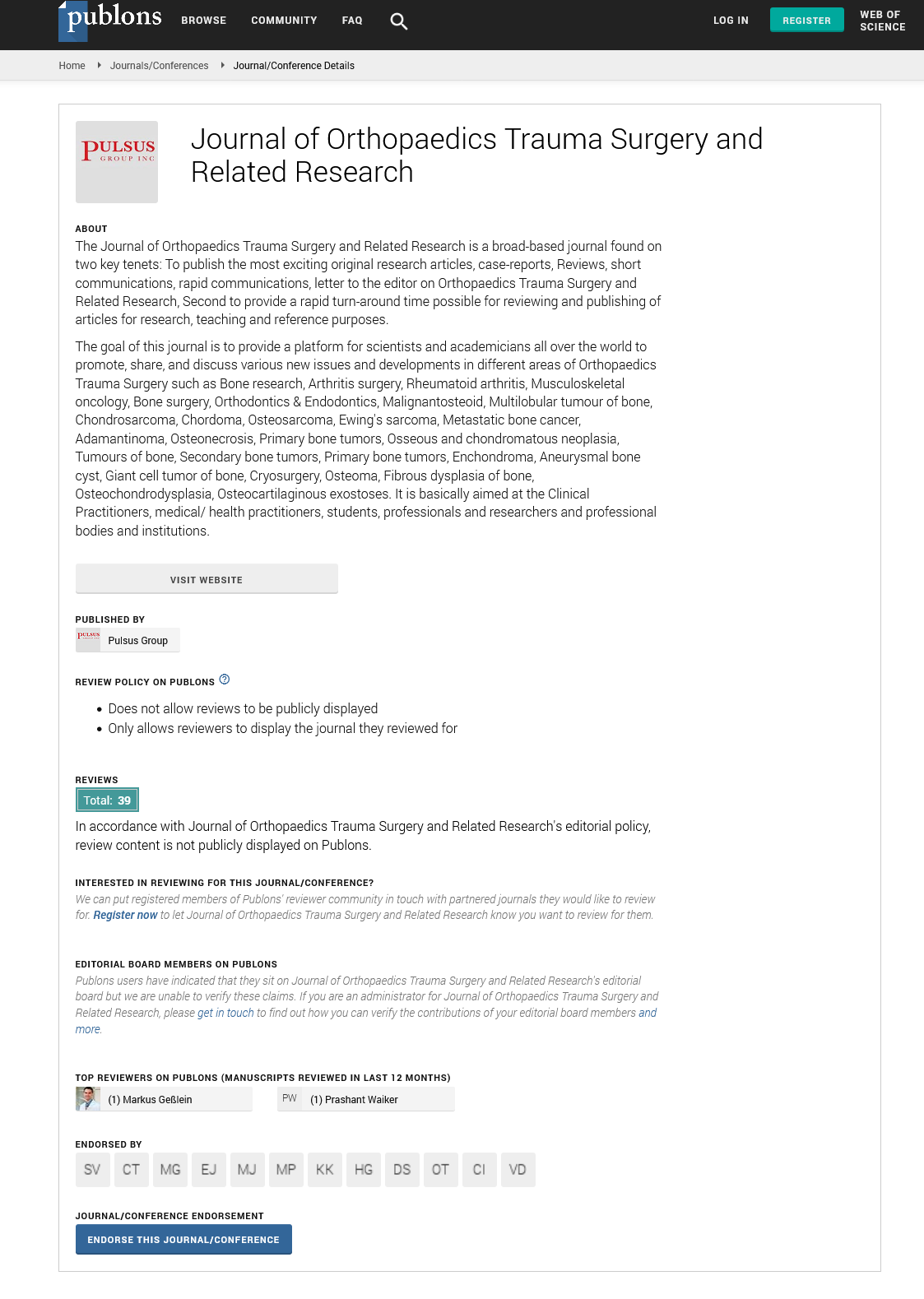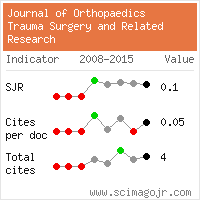The clinical and functional results of trochanter major fixation in elderly patients who underwent hip arthroplasty with unstable pertrochanteric fractures
Received: 18-Dec-2018 Accepted Date: May 23, 2019 ; Published: 30-May-2019
This open-access article is distributed under the terms of the Creative Commons Attribution Non-Commercial License (CC BY-NC) (http://creativecommons.org/licenses/by-nc/4.0/), which permits reuse, distribution and reproduction of the article, provided that the original work is properly cited and the reuse is restricted to noncommercial purposes. For commercial reuse, contact reprints@pulsus.com
Abstract
Aim: To evaluate the effect on the clinical results of fixation methods of trochanter major fractures in patients with unstable pertrochanteric fractures who underwent hip arthroplasty.
Material and Method: Evaluation was made of 72 patients with an unstable pertrochanteric fracture who underwent hip arthroplasty with fixation of the trochanter major between 2011 and 2016. A tension band was applied to 34 patients and trochanteric grip plates and cables to were applied to 38 patients. Evaluation of the patients was made using the Parker Mobility Score and the Harris Hip Score.
Results: The mean age of the 72 patients who participated in the study was 84 (70-96), and the mean follow-up was 18 (6-30) months. An increase was seen in the mean clinical scores of the patients; 6 months postoperative Parker Mobility Score (7.0) and Harris Hip Score (78.9). Union in the trochanter major was determined in 58 patients. In 2 patients who received tension bands, breakage occurred in the tension wire and there was a dislocation of the Kirschner wires. In 2 patients where trochanteric grip and cable were used, there was cable breakage and dislocation of the plate, and osteolysis was determined in the trochanter major in 2 patients and superficial infections and persistent discharge were seen in 3 patients.
Conclusion: Fixation devices applied with different techniques are effective methods in the treatment of major fractures and contribute to early mobilization after hip arthroplasty. In weak patients, a grip plate may cause infection and persistent discharge related to skin irritation and there is a greater risk of osteolysis and trochanteric region pain developing compared with the application of tension band.



 Journal of Orthopaedics Trauma Surgery and Related Research a publication of Polish Society, is a peer-reviewed online journal with quaterly print on demand compilation of issues published.
Journal of Orthopaedics Trauma Surgery and Related Research a publication of Polish Society, is a peer-reviewed online journal with quaterly print on demand compilation of issues published.